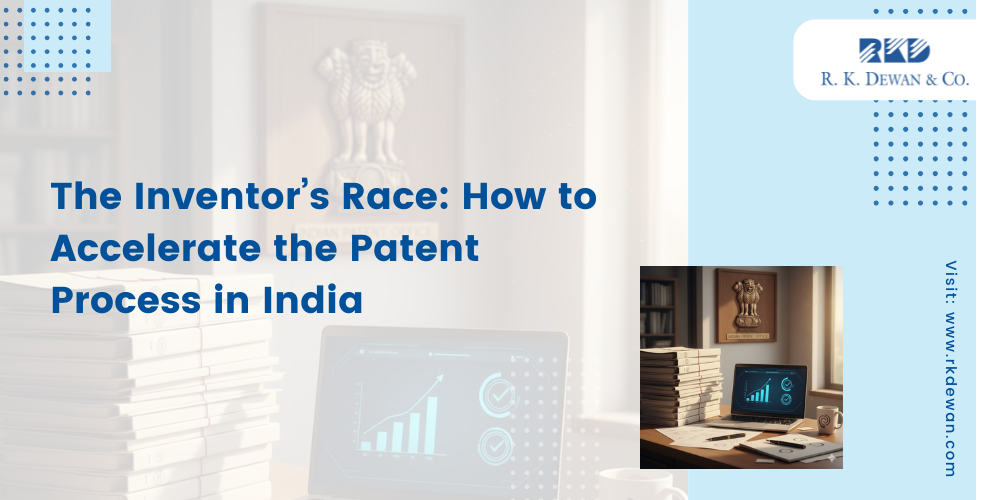In India, getting a patent can make or break a business or innovator. The usual process drags on for years, which doesn’t work in today’s fast, cutthroat market. Fortunately, the Indian Patent Office (IPO) has ways to speed things up, helping protect and profit from inventions faster. This article explains the best ways to fast-track patent grants, who can use them, and practical tips, including how Patent Cooperation Treaty (PCT) applications can move quickly in India.
Normally, a patent application goes through filing, publication (usually after 18 months), examination (which must be requested within 31 months from the priority or filing date for applications filed on or after March 15, 2024, or 48 months for older ones), and then a grant if everything checks out. This can take 3-5 years because of backlogs. Fast-track options can cut this down to months.
Expedited examination, under Rule 24C of the Patents Rules, 2003 (as amended), gets the First Examination Report (FER) out in 1-3 months instead of 12-24 months for regular examination. Those who can apply include startups (recognized by the Department for Promotion of Industry and Internal Trade), small entities (as defined by the Micro, Small and Medium Enterprises Development Act, 2006), government bodies, applicants who picked India as the International Searching Authority (ISA) or International Preliminary Examining Authority (IPEA) for PCT applications, or those the government flags for public interest. Women or individual applicants might also qualify, especially as startups or small entities (always check the latest IPO notices). Foreign applicants can use a startup or PCT ISA/IPEA status, but big companies usually only qualify for public interest or government-related cases.
To get expedited examination, file Form 18A with the required fee.
- The application needs to be published first, so an early publication request might be needed;
- Submit proof like a startup certificate, pay the fee, and expect the FER in 1-3 months if everything’s in order;
- Respond to any objections within 6 months (extendable by 3 months) to keep things moving; and
- The IPO’s InPASS portal lets applicants track progress. Tech, biotech, and pharma industries gain the most since their fields move fast.
Early publication skips the standard 18-month wait for publication. File Form 9 with the required fee any time after the application. Publication usually happens in the next weekly Patent Journal, often within a month, letting examination start right away. It also kicks off the 4-month window for oppositions earlier, which can clear hurdles sooner. But once published, the invention is public, so be ready for copycat risks. Provisional protection starts at publication, allowing claims for damages if someone infringes before the grant.
For PCT applications naming India, the usual national phase entry deadline is 31 months from the priority date. An express request under PCT Article 23(2) lets the IPO start processing before that deadline.
- File Form 18 (for regular examination) or Form 18A (for expedited) with national phase documents, clearly asking for early processing in the cover letter to the Controller. Include PCT details and verified English translations if needed;
- Fees match standard national phase rates, with expedited adding Form 18A costs;
- Early processing means examination can start right after entry, cutting months off the timeline. Eligible applicants combining express entry with expedited examination can get an FER in 1-3 months after entering. If India was chosen as ISA/IPEA in the PCT phase, this automatically qualifies for expedited national examination, using international work to speed things up; and
- For instance, a biotech startup entering India at 20 months with an express request and expedited examination could get a grant in 1-2 years from PCT filing, compared to 3-4 years normally.
Even without fast-track eligibility, smart filing helps. Draft claims clearly and narrowly, include multiple claim sets (independent and dependent), and mention prior art upfront to avoid objections. Respond to FERs quickly and fully, ideally within 2-3 months, to prevent delays. Startups and small entities get fee reductions by registering early with DPIIT or MSME. PCT filings should use express national entry to sync with global plans. Doing a prior art search before filing strengthens the application and reduces FER issues. Divisional applications can cover variations without slowing the main one. A registered patent agent can handle tricky issues like unity of invention or Section 3(d) objections (common in pharma).
Expedited patent processes are critical when timing matters. In fast-moving fields like artificial intelligence, biotechnology, or e-commerce, a granted patent secures a competitive edge by blocking rivals early. Startups seeking investment gain credibility from a granted patent, signalling strong, enforceable IP to funders. Businesses aiming to license or sell technology can act sooner, seizing market opportunities. In cases of potential infringement, a faster grant enables quicker legal action to protect market share. For firms in mergers, acquisitions, or fundraising, a granted patent boosts valuation by proving IP strength. By combining expedited examination, early publication, express PCT entry, and smart filing, businesses can turn patents into powerful tools that match the pace of today’s markets. Working with skilled patent professionals and acting swiftly ensures these options deliver maximum impact.


